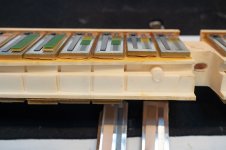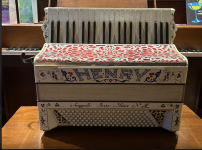Hi Richard, it's quite informative .I do understand the passion for either Italian made or vintage Hohner instruments, but I didn't realise there was a sort of hierarchy depending on how many buttons one has.
It does open up an interesting conundrum, on what actually constitutes a proper accordion.
The Bugari Juniorfisa 48 Bass Accordion is Italian made but it's only 48 bass so does not meet Alfred Mirek's minimum 3/4 instrument.
But the Bravo III 120 Bass Accordion does meet the bass requirements but its made in China.
Reminds me a little of the old Groucho Marx joke.
Groucho Marx's daughter wanted to join a swimming club.
The club was anti-Semitic - so she couldn't get in.
Groucho wrote to the club and said, 'For your information, my daughter is half-Jewish. Can she go in the pool up to her waist?



